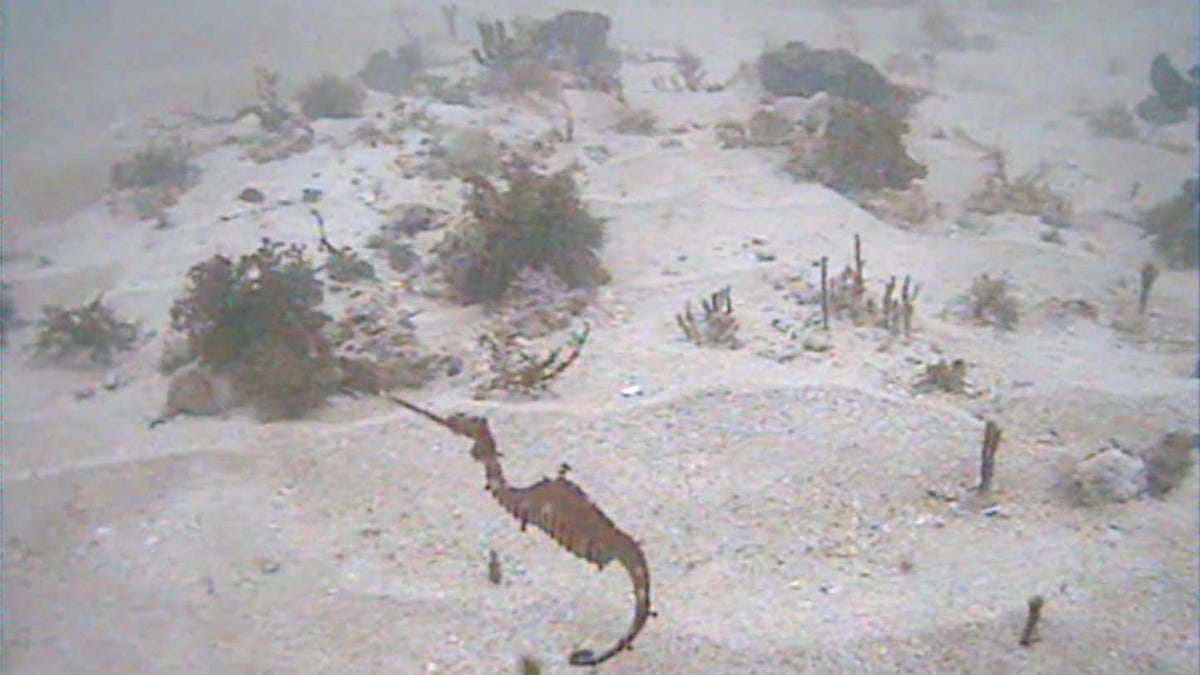Elusive ruby seadragon seen in the wild for the first time
After its discovery in the form of remains two years ago, researchers have finally found ruby seadragons off the coast of Australia.
The ruby seadragon, Phyllopteryx dewysea, is a shy, evasive sort of creature. In fact, it's so slippery that we didn't even know of its existence until February 2015, and only then in the form of tissue samples. To find out more about it, researchers went out seeking a glimpse of the living animal.
And, thanks to a remotely-operated underwater vehicle, researchers from the Scripps Institution of Oceanography have it, obtained in the waters near Western Australia's Recherche Archipelago. In April 2016, they were able to observe two ruby seadragons for nearly 30 minutes. Their research has been published today in the journal BioMed Central.
The ruby seadragon is only the third species of seadragon known, and it differs from the other two species, the leafy and weedy seadragons that inhabit the southern waters of Australia, in several key ways.
Not the least of these is its habitat, which is thought to be partially responsible for why it remained undiscovered for so long. While the weedy and leafy seadragons inhabit shallow waters, between depths of 1 to 50 metres (3 to 165 feet), the ruby dwells deeper, below depths of 50 metres -- well out of the range of scuba divers.
It also does not live, as the leafy and weedy seadragons do, in algal reefs of kelp and seagrass, but sponge reefs.
As discovered by Scripps marine biologists Josefin Stiller and Greg Rouse, and Nerida Wilson of the Western Australian Museum in February 2015, the ruby seadragon is indeed a rich red in colour, which helps provide camouflage, since red light doesn't penetrate the ocean depths very well, and the red hue of the seadragon absorbs all other colours.
The original sample of the ruby seadragon was found in 2007, and photographed upon collection before being transferred to the Western Australian Museum. In the photograph, it lacked the leafy appendages that help the other two seadragons camouflage. The team were not sure if these had been lost prior to the animal being photographed, but the sighting revealed that ruby seadragons are indeed quite bare.
"It was really quite an amazing moment," Stiller said. "It never occurred to me that a seadragon could lack appendages because they are characterised by their beautiful camouflage leaves."
However, it is similar to its fellow seadragons in the way it feeds, striking at its prey; and possibly in size as well, with the original sample coming in at around 23 to 25 centimetres (9 to 10 inches) in length (the leafy seadragon measures up to 35 centimetres or 13.8 inches long, the weedy seadragon up to 46 centimetres or 18 inches long).
Perhaps the most surprising find of all is that, unlike the leafy and weedy seadragons, the ruby seadragon has a prehensile tail that it can curl around objects to avoid being swept away when the water surges. Further study will need to be conducted on the animal to determine whether the ruby seadragon acquired the ability, or the leafy and weedy seadragons lost it.
"There are so many discoveries still awaiting us. Western Australia has such a diverse range of habitats, and each one is deserving of attention," Wilson said.


